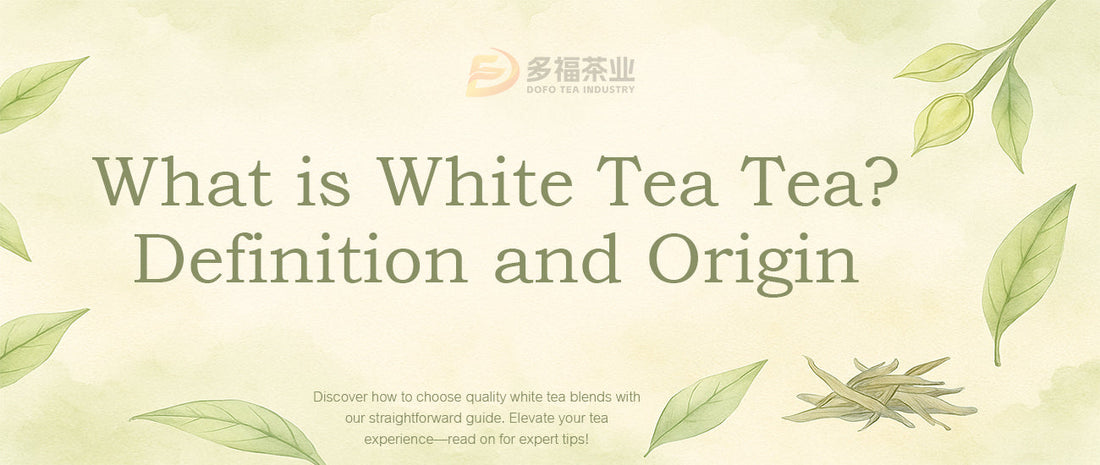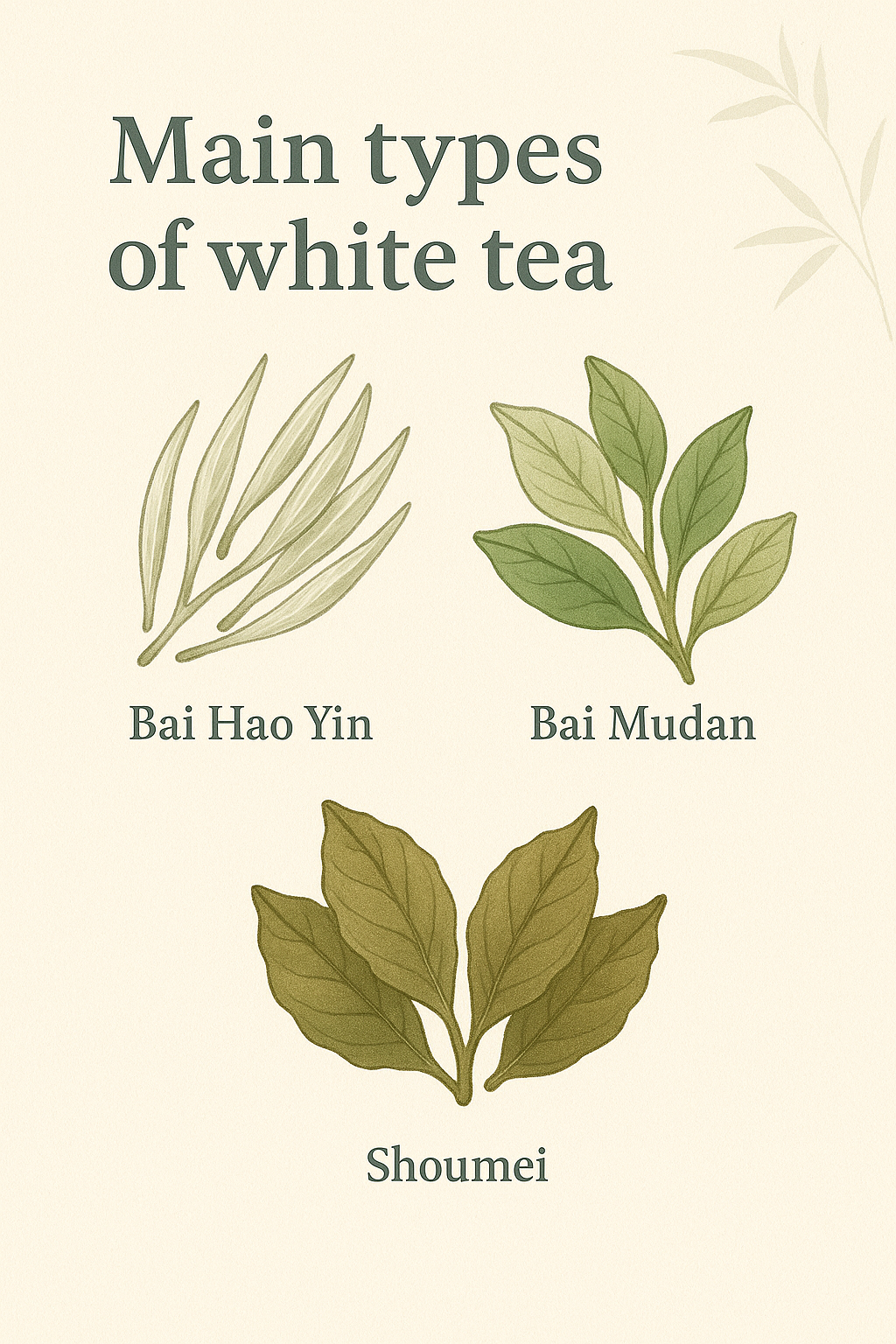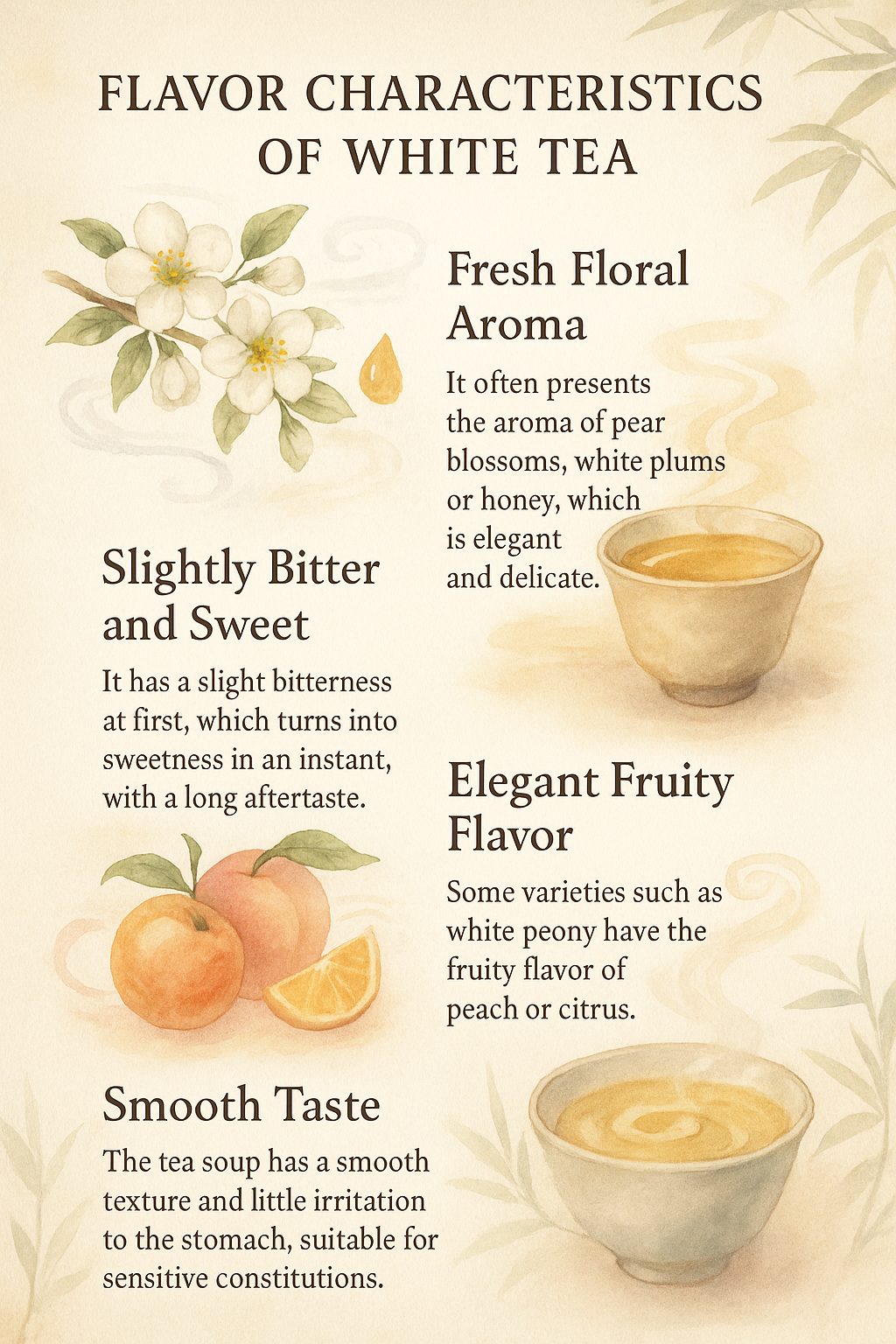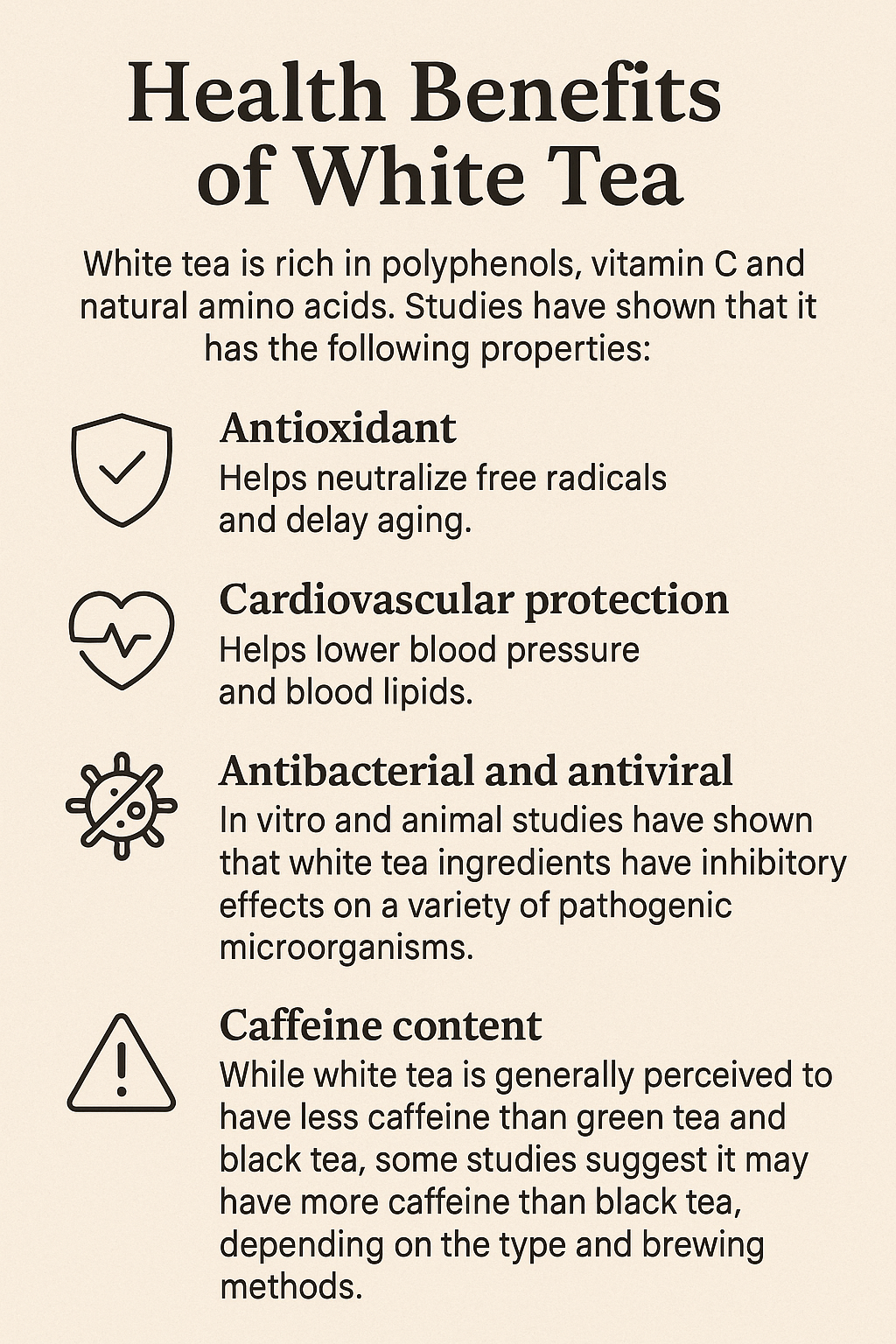
What is White Tea Tea? Definition and Origin
liujiehangShare
White tea is one of the least processed traditional teas. It is harvested from the young leaves and buds of the tea plant, Camellia sinensis, and is only lightly withered and dried, without rolling or fermentation.
It gets its name from the silvery hairs on the young leaves, which shimmer in the sun and give the leaves their “white” appearance.
While China is the primary producer of white tea, other countries like Nepal are also emerging as significant producers.
Commercial production began in China’s Fujian Province in the 18th century. The earliest varieties included “Da Bai” and “Da Hao”, and later derived from various white teas such as Bai Hao Yin Zhen and Bai Mudan. White tea holds historical significance in Chinese culture, with cultivation and preparation methods that date back centuries, positioning China as the primary authority on white tea production.
Main types of white tea

Bai Hao Yin Zhen / Silver Needle
- Ingredients: Only the unopened buds are picked to ensure the most delicate taste, making Silver Needle a good quality white tea.
- Appearance: The buds are covered with fine white hairs, which contribute to the tea's name and signify its delicate nature. The tea leaves are slender and straight.
- Flavor: The soup is light yellow with a faint floral fragrance and a light honey sweetness, and the taste is extremely delicate and smooth.
Bai Mudan/White Peony
- Ingredients: A combination of picking one bud and two leaves, the balance between freshness and buds and leaves shows a more natural flavor. White Peony is one of the different white teas known for its unique flavor profile.
- Appearance: The cords are thicker, with buds and leaves coexisting.
- Flavor: The aroma is richer than that of Silver Needle, with floral and grassy aroma, with a slightly fruity and sweet aftertaste. White Peony also has a bolder flavor compared to the more delicate Silver Needle.
Shoumei
- Raw materials: Mainly collected from young leaves and some old leaves in early spring. The production process is similar to that of other white teas like Shou Mei, but the picking standards are more relaxed.
- Appearance: The tea leaves are plump and the buds and leaves are not very neat.
- Flavor: The taste is thick, with ripe fruit aroma and light woody aroma; the tea soup is dark amber in color and has higher antioxidant content. Shou Mei, in particular, tends to have a darker appearance and bolder flavor compared to higher-end varieties like Silver Needle and White Peony.
Regions and new varieties
Fuding, Fujian: the birthplace of Silver Needle and White Peony, producing high-quality white tea. Most white teas are predominantly grown in China, but other countries like Nepal are also producing high-quality white teas.
Zhenghe White Tea: thick buds and leaves, more mellow flavor.
Darjeeling White / Yunnan White: In recent years, attempts have been made to grow white tea in Yunnan and Darjeeling, India, which has a fuller tea aroma due to different climatic conditions. Other countries are also contributing to the production of new varieties of white tea, expanding the global appreciation for this delicate beverage.
Flavor characteristics of white tea
Unlike green tea and black tea, white tea retains more natural ingredients due to minimal processing. Its typical flavors include:

- Fresh floral aroma: It often presents the aroma of pear blossoms, white plums or honey, which is elegant and delicate.
- Slightly bitter and sweet: It has a slight bitterness at first, which turns into sweetness in an instant, with a long aftertaste.
- Elegant fruity flavor: Some varieties such as white peony have the fruity flavor of peach or citrus.
- Smooth taste: The tea soup has a smooth texture and little irritation to the stomach, suitable for sensitive constitutions.
White tea is known for its common traits of being delicate, light, and sweet, making it softer and sweeter compared to other types of tea.
The best white tea flavors often come from the tender buds and leaves picked in early spring, with the highest free polyphenol content and aroma. Some varieties, like White Peony, have a bolder flavor compared to others, offering a richer taste profile.
Brewing white tea: tips and precautions
- Water temperature: Using hot water at 70℃–85℃ is appropriate to avoid the tea being too bitter.
- Soaking time: The steeping process is crucial for achieving optimal flavor. Steeping for 1–3 minutes is recommended, and you can brew more tea soup by short brewing in batches. Adjusting the steeping time can influence the tea's flavor and caffeine content.
- Tea ratio: It is recommended to use 2–3 g of loose leaves per 150 ml of water. If using tea bags, 1 bag is enough.
- Container selection: Transparent glass or porcelain can be used to observe the color and enjoy the fragrance; you can also use a covered bowl or a Western teapot.
- Multiple brewing: High-quality white tea can be brewed more than 5 times, and the flavor is subtle and different each time, and the more you brew, the more mellow it becomes.
Key points for storing white tea
- Storage tips: Avoid sunlight to prevent the tea from spoiling.
- Sealed: Store in a sealed container to isolate air and odor.
- Moisture-proof: Store in a dry environment to prevent the tea from getting damp and moldy.
- Normal or low temperature: Store in the refrigerator (not the freezer) to extend the shelf life of the tea.
Proper storage is crucial for maintaining the quality and flavor of loose leaf white tea.
Health Benefits of White Tea
White tea is rich in polyphenols, vitamin C and natural amino acids. Studies have shown that it has the following properties:

- Antioxidant: Helps neutralize free radicals and delay aging.
- Cardiovascular protection: Helps lower blood pressure and blood lipids.
- Antibacterial and antiviral: In vitro and animal studies have shown that white tea ingredients have inhibitory effects on a variety of pathogenic microorganisms.
- Caffeine content: While white tea is generally perceived to have less caffeine than green tea and black tea, some studies suggest it may have more caffeine than black tea, depending on the type and brewing methods. To manage caffeine intake from white tea, consider choosing specific types known for lower caffeine levels and adjusting brewing times.
Select high-quality organic white tea
- Origin certification: Traditional production areas such as Fuding and Zhenghe in Fujian are preferred.
- Organic certification: Avoid pesticide residues and ensure pure flavor.
- Buds and leaves are complete: Selecting young tea leaves is crucial for the best quality. Silver needles should be covered with hairs; White Peony needs buds and leaves. Good quality white tea, such as Noble, Long Life Eyebrow, and Tribute Eyebrow, offers distinct characteristics and flavors, though they are not as prestigious as Silver Needle and White Peony.
- Packaging information: Check the production and shelf life, and give priority to sealed iron cans or aluminum foil bags.
Recommended White Tea from Dofo Tea
At Dofo Tea (https://dofotea.com/), you can choose the following high-quality loose leaf white teas:
- Fuding Old White Tea: Traditional sun-dried green white tea, golden soup color, mellow taste, and obvious sweetness;
- White Peony Tea Cake: Compressed cake tea, buds and leaves alternate, easy to store, with unique fruity and honey flavor after brewing.
Combined with correct brewing and storage, you can easily enjoy the most representative Chinese white tea flavor at home.
White tea has become a treasure in the world of tea for its minimally processed production process, delicate and elegant taste, and rich health benefits. From Silver Needle to White Peony, to Shoumei and Yunnan new varieties, each white tea interprets the core flavors of “light”, “new”, “fresh” and “sweet”. Master the correct brewing and storage techniques, and purchase organic high-quality raw materials, you can taste the fragrance of the spring morning and the pure gift of nature in every cup of tea. Whether you drink it alone or share it with your best friends, white tea can bring you a different tea experience: light as smoke, but with a long-lasting taste.





